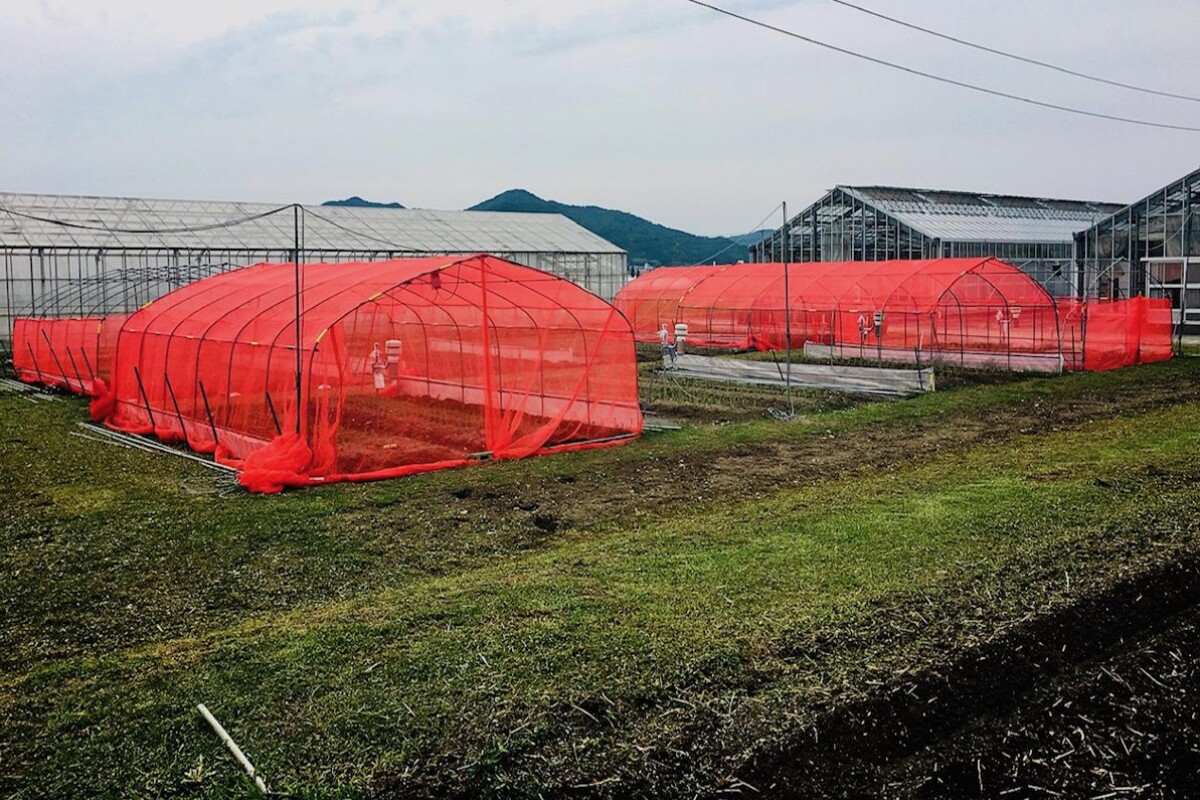
We are slowly seeing the development of useful agricultural netting. I certainly saw horizontal nets used extensively in Taiwan and that could only be for shading. fun to take down with an incomingTyphoon.
Nets like these could easily be rigged up on a tractor mounted hanger and collpased into a bundle allowing easy removal and setup.
Nets like these could easily be rigged up on a tractor mounted hanger and collpased into a bundle allowing easy removal and setup.
Study suggests red netting is best at protecting crops from insects
By Ben Coxworth
February 14, 2024
https://newatlas.com/science/red-netting-crops-insect-pests/
When it comes to protecting crops via insect-blocking netting, you may think that the size of the holes in that netting is the most important factor. According to new research, however, the color of red netting makes an even bigger difference in effectiveness.
Ordinarily, agricultural netting is either black or white, or sometimes blue or green. Although red netting generally isn't used, a 2015 study showed that when crops were irradiated with red light, pest insects known as onion thrips (Thrips tabaci) tended to stay away from the plants.
With that finding in mind, Prof. Masami Shimoda and colleagues at The University of Tokyo wondered if red-colored netting might have a similar effect. In order to find out, they experimented with nets of three different red-containing color combinations: red-white, red-black and red-red. Each color combo was in turn tried in 2-, 1- and 0.8-mm mesh-gap sizes.
All of these nets – along with traditional black, white and black-white nets of the same mesh sizes – were hung over Kujo leek (aka Welsh onion) crops to protect them from onion thrips. Not only do the insects eat the plants, they can also infect them with harmful viruses.
The color combinations of red netting utilized in the study
Although comparing the performance of all the different color/mesh-size combinations produced a lot of different numbers, it was generally found that the various types of red netting were much more effective than their black and/or white equivalents. For example, when it came to the 0.8-mm netting, the number of feeding marks on plants with the red-black and red-red netting was about one-ninth to one-quarter that of plants with the white netting.
It was even found that in some cases, red netting with larger holes – through which the insects could physically pass – was still more effective than black or white netting with smaller holes. This finding suggests that the deterrent effect is vision-based, although the exact means by which it works is still not fully understood.
"Most insects don’t have red photoreceptors in their eyes and it is difficult for them to see the color red, so we found it curious that an invisible color can be used to control them," said Shimoda.
An onion thrip, alongside a thrip-damaged Kujo leek plant
It is hoped that use of the red netting could ultimately reduce the need for pesticides while simultaneously boosting yields. Additionally, because larger mesh sizes can be used, crops should have increased exposure to sunlight and better airflow, and therefore be less likely to develop fungal infections.
"If consumers are interested in this type of sustainable agriculture and using less chemical pesticide, I have no doubt that this simple yet effective solution will spread widely," said Shimoda.
A paper on the research was recently published in the journal Scientific Reports.
No comments:
Post a Comment